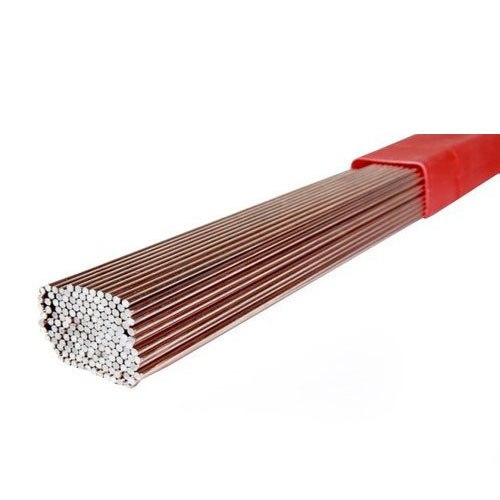read our article that breaks down ton “How Welding Electrodes Are Classified?” and determine which types are best suited for the project.
For many welders, classifying welding electrodes is essential in selecting the correct electrode type for the job. This article will discuss the four main types of welding electrodes and how they’re classified.
We’ll also provide a brief overview of the different uses for each type of electrode.
Welding electrodes are classified by diameter.
Welding electrodes come in various diameters, from the smallest (0.8mm) to the largest (1.6mm). The diameters are measured in millimeters, and the larger the diameter, the more influential the electrode.
There are two main types of welding electrodes: rod and wire.
Rod
Rod welding electrodes are made from a wire wrapped around a metal core. These electrodes are typically smaller than wire welding electrodes, and they’re used for beginner welders because they’re easier to use.
Wire
Wire welding electrodes are made from a cable-like wire stretched between two metal plates. They’re more advanced than rod welding electrodes and used for more difficult welds.
The type of welding you’ll use your electrode depends on the material you’re welding. Rod welding electrodes are usually adequate for metals such as steel, aluminum, and copper.
Wire welding electrodes are often necessary for more delicate materials, such as plastic and fiberglass.

Welding electrodes are classified by material
Welders need to know the different welding electrodes and their corresponding settings to produce the best results.
Different types of welding electrodes are made from other materials, and each has properties that can affect the quality of the weld.
Here’s a look at the most common welding electrode materials and their corresponding classification:
Gas tungsten arc welding (GTAW)
Gas tungsten arc welding (GTAW) uses a metal electrode made from tungsten. This electrode type is suitable for welding thick metal plates because it produces a durable weld. The downside is that this electrode is not as effective when welding thin pieces of metal.
Flux-cored arc welding (FCAW)
Flux-cored arc welding (FCAW) uses an oxidized copper wire as the welding electrode. This electrode type is suitable for welding metal with a high carbon content because it produces a robust and stable weld. However, FCAW is not as effective at thin welding pieces of metal.
How Welding Electrodes Classified?
Welding electrodes are classified by type.
Welders use different types of electrodes to weld other metals. The electrode type affects the temperature and arc used in the welding process.
Here are the most common welding electrode types:
Gas tungsten arc welding (GTAW) uses a gas-fired filler wire. A rod or wire made of tungsten is heated until it glows, then inserted into the weld joint. The rod or wire is positioned close to the workpiece and welded using a high-voltage current. This type of welding is best used on thin metals with good heat conductivity.
Electrode-arc welder (EAW) uses an electric arc instead of a gas flame. A small electrode is put into the weld joint, and a higher-voltage current flows through it. This type of welding is best used on thick metals with low heat conductivity.
ArcStart® welder starts with an electric arc and gradually builds to a gas flame as needed. This type of welding is suitable for joining dissimilar metals with good heat transfer properties.
Welding electrodes are classified by function.
Welding electrodes are classified by function according to the electrode type and the welding method.
There are three main types of welding electrodes: solid state, gas-arc, and MIG.
Solid state
Solid state welding electrodes use a small amount of electricity to heat metal to a high temperature, vaporizing the metal’s atoms and creating a weld. This process is used for most welding in the fabrication industry, as it is faster and easier than using an arc welder.
Gas-arc
Gas-arc welding electrodes use an electric arc to create a weld. A gas-arc welder has two pieces of shielding that make an angle between them. This creates a more powerful weld than a solid state welder but also creates more heat, so it’s not used as often in the fabrication industry.
MIG welding electrodes use an inert gas (usually argon) to create a weld. This process is less popular than the other two but can be more effective in some cases because it doesn’t generate as much heat.
